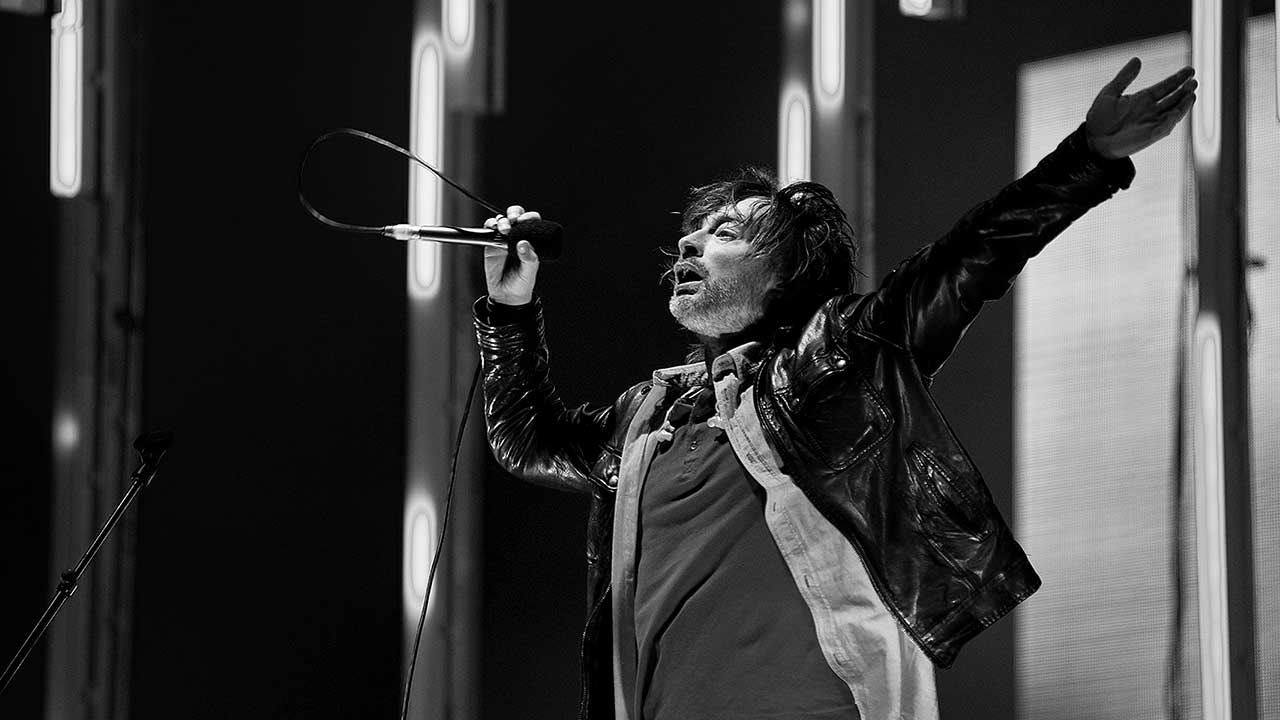How Radiohead revolutionised rock music in the ‘00s
Radiohead bassist Colin Greenwood once reflected on the trailblazing run of records that turned rock music on its head in the 2000s

Radiohead had spent the 90s working out what it meant to be a modern rock band. After a pair of game-changing, guitar-heavy records in The Bends and OK Computer, over the next decade they laid down a blueprint for everyone else. Except Radiohead’s blueprint was that there shouldn’t be a blueprint. “You’d think by now we’d know what’s going to work, and what’s still frustrating for us,” bassist Colin Greenwood told Classic Rock back in 2009. “But it’s encouraging that we don’t know whether something’s going to come across played on a laptop or whether it has to be done on a piano. It’s gotten so twisted. But what we’ve learned is that you can’t repeat a method that you’ve already used on a different song just because it worked back then.”
At that point, Radiohead were coming off the back of In Rainbows, the creative peak of what you might describe at the band’s second imperial phase. It had begun with 1999’s Kid A, an album that drew a line under the jagged art-rock that made them huge, ushering in an era of experimentation with electronics and warped beats. But new ways forward weren’t without their missteps – 2003’s sprawling and overlong Hail To The Thief suggested they weren’t certain which way to go so tried to go to everywhere at once.
Talking to Classic Rock, Greenwood suggested the only thing they were sure of was that the old rules of being in a band no longer mattered. “We don’t have to have all five of us playing on a track for it to be a Radiohead track,” he opined. “Being in Radiohead is a bit like a meeting house; it’s where we get together and share ideas about what we’re excited about and then bugger off.”
Equally, they wanted to disassociate themselves from “rock music”, a genre they saw as anachronistic and vulgar. “So much of what people term ‘rock music’ now is really not based on the music itself, but based on the lifestyle that goes with it," he said. "It’s like a lifestyle choice… The mythology around it is stale and uncreative now.”
It's an approach that led Radiohead to In Rainbows, the most perfect distillation of how the band expanded their sonic horizons. It’s a record where surging post-punk sat in harmony next to baroque folk, where beat-heavy indie-pop gave way to blues-y alt-rock and ambient ballads. “Each of us have different musical axes to hit other people with,” explained Greenwood. “Thom loves the Autechre record; I’m going through a Fleetwood Mac and ’71 Greatest Hits obsession. Our manager introduced me to Fleetwood Mac years ago, because he knew the Peter Green-era, psychedelic folk blues would interest me.”
In Rainbows would become a touchstone for a new generation of guitar bands who wanted to do something more daring and experimental, groups such as Foals, Everything Everything, The Maccabees and more. Pearl Jam, meanwhile, have spoken about having a go at their own Radiohead-style transformation one day.
Curiously, In Rainbows now feels like the end of something for Radiohead. The Oxford quintet have only released two new studio albums since, with recent activity more based about looking back for a series of reissues. Perhaps it’s time for the most forward-thinking band of their generation to get back on the saddle.
The latest news, features and interviews direct to your inbox, from the global home of alternative music.
Niall Doherty is a writer and editor whose work can be found in Classic Rock, The Guardian, Music Week, FourFourTwo, on Apple Music and more. Formerly the Deputy Editor of Q magazine, he co-runs the music Substack letter The New Cue with fellow former Q colleagues Ted Kessler and Chris Catchpole. He is also Reviews Editor at Record Collector. Over the years, he's interviewed some of the world's biggest stars, including Elton John, Coldplay, Arctic Monkeys, Muse, Pearl Jam, Radiohead, Depeche Mode, Robert Plant and more. Radiohead was only for eight minutes but he still counts it.

